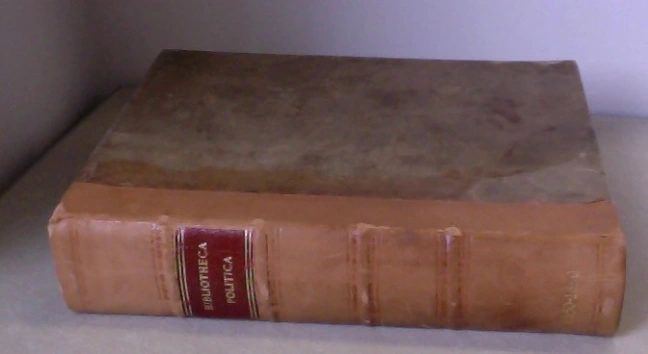A dispatch from Anthropodermic Book Project team member Dr. Richard Hark and librarian Jacob Gordon about their university library’s journey to find if one of their books was bound in human skin.
In April of 2014, a 2006 article from the Harvard Crimson about the practice of anthropodermic bibliopegy, binding books in human skin, went viral. Shortly after this article made its rounds, the Harvard Law School Library posted a brief article indicating that testing had confirmed one of the books in the Crimson article had been bound in sheepskin.
It had long been rumored that Juniata College’s Beeghly Library had a book bound in human skin. This volume, Bibliotheca Politica (full title: Bibliotheca politica; or, A discourse by way of dialogue, whether monarchy be jure divino: collected out of the most approved authors, both ancient and modern. Dialogue the first.), is from the late seventeenth century and offers several essays on the divine right of kings. The collector who owned the item prior to its admittance to the collection, Abraham Harley Cassel, believed the item was thus bound and noted it as such in the front fly-leaf.

On May 2, 2014 Dr. Richard Hark, Librarian Jacob Gordon, Library Director John Mumford and Assistant Professor of Biology Regina Lamendella spent about 90 minutes in the College Archives obtaining samples from the book. The plan was to take 10 to 15 tiny samples from the cover, binding and other areas.
Dr. Hark used a stereomicroscope and shared the view port for all to see that the magnified cover was obviously some kind of skin cell. The image was compared to a photo plate from Ancient Skins, Parchments and Leathers (Studies in archaeological science) but nothing conclusive could be learned by visual inspection and comparison. Using a scalpel and tweezers, Dr. Hark carefully removed nearly microscopic samples and placed them in labeled vials. Further observation of the skin under the microscope revealed that there appeared to be four discernable layers, one of which showed significant pigmentation. The binding was only in fair but stable condition allowing samples to be taken from less worn portions and multiple areas on the spine, inner and outer boards
Several references to Frankenstein later, a total of 16 samples were sealed in plastic tubes and packaged for mailing to Daniel Kirby at Harvard’s Straus Center for Conservation and Technical Studies. Dr. Hark had previously been in contact with Kirby who agreed to perform peptide mass fingerprinting (PMF) analysis as he had done with samples from the Harvard books mentioned previously.
After a period of anxious waiting, word came back that, like the first Harvard book tested, the book held at Beeghly Library was covered in parchment made from a sheep, not a human. The result was actually somewhat of a relief to the library staff though some students were undoubtedly disappointed. They often asked to see the book “bound in human skin” and campus tour guides frequently mentioned its existence (as if that would induce a prospective student to matriculate…) while failing to point out the other rare and interesting items in the Special Collections and College Archives.
This initial foray into anthropodermic bibliopegy research led Dr. Hark to join with similarly interested researchers on a quest to identify examples of potential “AB” at other institutions and arrange for testing using PMF. Jacob Gordon subsequently wrote an extensive summary of the practice of anthropodermic book binding. The rest, as they say, is history.

